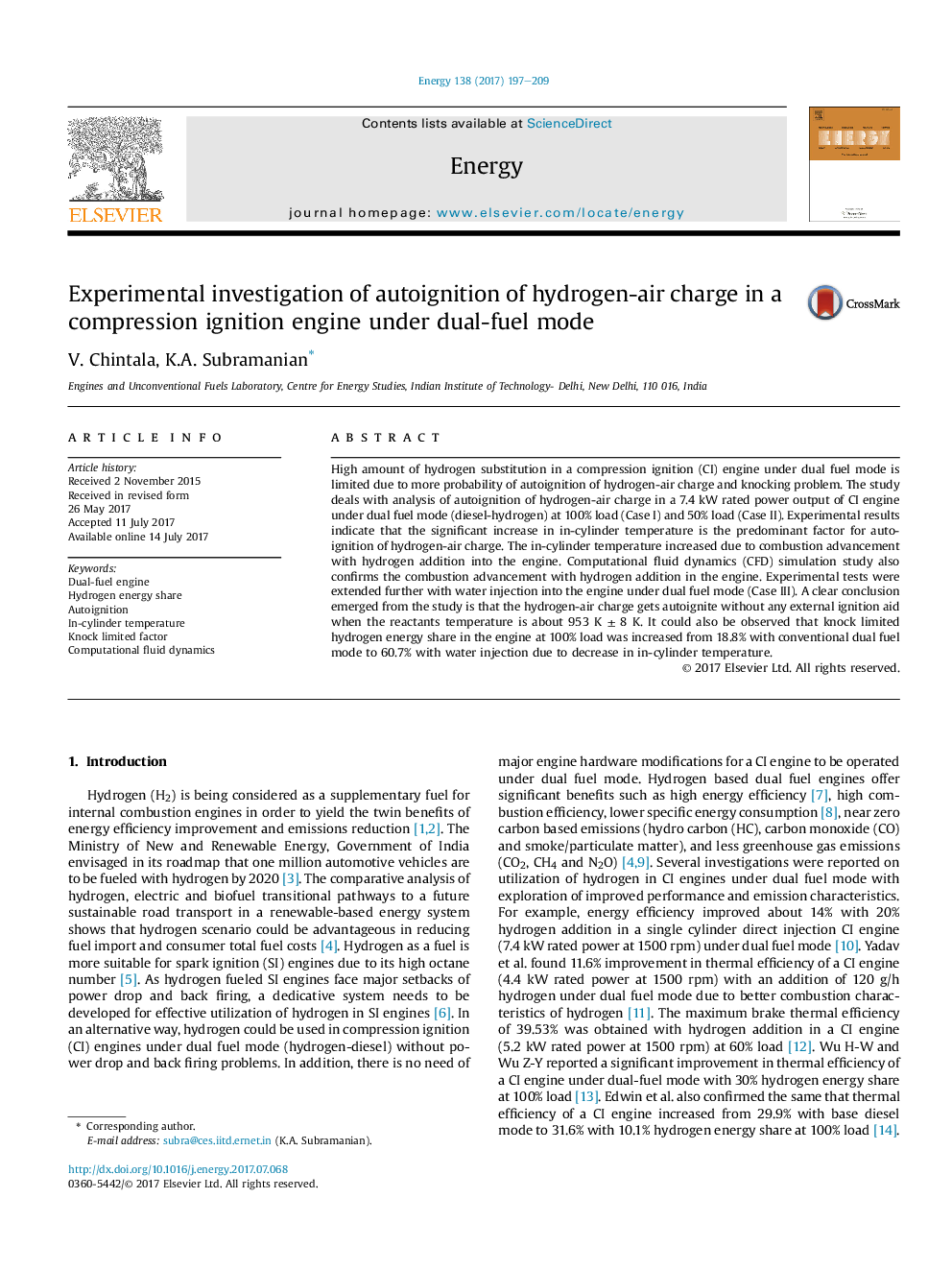| کد مقاله | کد نشریه | سال انتشار | مقاله انگلیسی | نسخه تمام متن |
|---|---|---|---|---|
| 5475495 | 1521413 | 2017 | 13 صفحه PDF | دانلود رایگان |
- Maximum H2 energy share in a CI engine at 100% load is limited due to knocking.
- Autoignition of hydrogen-air charge leads to knocking during combustion.
- Increase in in-cylinder temperature is main reason for autoignition of the charge.
- Start of combustion advanced with H2 addition in the engine under dual fuel mode.
- Maximum H2 energy share increased with reduction in in-cylinder temperature.
High amount of hydrogen substitution in a compression ignition (CI) engine under dual fuel mode is limited due to more probability of autoignition of hydrogen-air charge and knocking problem. The study deals with analysis of autoignition of hydrogen-air charge in a 7.4 kW rated power output of CI engine under dual fuel mode (diesel-hydrogen) at 100% load (Case I) and 50% load (Case II). Experimental results indicate that the significant increase in in-cylinder temperature is the predominant factor for autoignition of hydrogen-air charge. The in-cylinder temperature increased due to combustion advancement with hydrogen addition into the engine. Computational fluid dynamics (CFD) simulation study also confirms the combustion advancement with hydrogen addition in the engine. Experimental tests were extended further with water injection into the engine under dual fuel mode (Case III). A clear conclusion emerged from the study is that the hydrogen-air charge gets autoignite without any external ignition aid when the reactants temperature is about 953 K ± 8 K. It could also be observed that knock limited hydrogen energy share in the engine at 100% load was increased from 18.8% with conventional dual fuel mode to 60.7% with water injection due to decrease in in-cylinder temperature.
Journal: Energy - Volume 138, 1 November 2017, Pages 197-209
